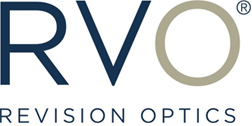Frequently Asked Questions Including Expert Answers From Our Raindrop Surgeons
What is presbyopia?
Presbyopia is a natural age-related condition that affects the eyes' ability to focus on near objects. It occurs due to a hardening of the natural lens in the eye and a weakening of the muscles that control the lens. As a result, the lens becomes less flexible and cannot adjust its shape as easily to focus on close-up objects.
What are presbyopia treatment options?
Presbyopia treatment options include reading glasses or bifocals, progressive lenses, monovision, multifocal contact lenses, corneal inlays, the Raindrop inlay, and laser vision correction. Before deciding on treatment, consult with an ophthalmologist to determine the best option for your individual needs.
How is the Raindrop inlay done?
The Raindrop inlay works by changing the shape of the cornea, which is the clear, dome-shaped surface at the front of the eye. The inlay is placed in the cornea of the non-dominant eye, and it works by creating a small central area of increased curvature on the cornea. This change in curvature helps to increase the depth of focus, allowing the eye to focus on near objects more easily.
How much does the Raindrop inlay cost?
The cost of the Raindrop inlay procedure can vary depending on several factors. They include the specific clinic policy, the surgeon's experience, and any additional fees for pre- or post-operative care costs. On average, the cost can range from $3,000 to $5,000 per eye.
Is the Raindrop inlay more expensive than other vision correction procedures?
The cost of the Raindrop inlay procedure is generally less expensive than other vision correction procedures, such as LASIK or refractive lens exchange. However, it is important to note that the Raindrop inlay is only designed to correct presbyopia and may not be effective for other vision problems.
What are contraindications for the Raindrop inlay?
Like any medical procedure, the Raindrop inlay has several contraindications that should be considered before undergoing the procedure. They include:
- Active eye infection or inflammation.
- Corneal abnormalities, such as thinning or scarring.
- Severe dry eye syndrome.
- Glaucoma or other serious eye diseases.
- Previous eye surgery, such as LASIK or cataract surgery.
- Keratoconus or other progressive corneal disorders.
- Autoimmune diseases, such as lupus or rheumatoid arthritis.
- Use of certain medications, such as immunosuppressants or steroids.
You can consult with our experienced ophthalmologist to determine whether you are a good candidate for the Raindrop inlay.
Will insurance cover the cost of the Raindrop inlay procedure?
In most cases, insurance doesn't cover the cost of the Raindrop inlay procedure. This is because it is considered an elective surgery. However, some insurance plans may cover a portion of the cost if the procedure is deemed medically necessary. Contact your insurance company before making an appointment to avoid unpleasant surprises.
Will any anesthesia be used for the Raindrop inlay?
Yes, local anesthesia is used during the Raindrop inlay procedure to numb the eye and minimize any discomfort. The procedure is minimally invasive and typically takes less than 10 minutes to complete.
What are success rates for the Raindrop inlay?
The Raindrop inlay demonstrates a high success rate in improving near vision in patients with presbyopia. In clinical studies, over 92% of patients achieved a significant improvement in their near vision after receiving the Raindrop inlay. However, as with any medical procedure, individual results may vary. It's important to consult with an experienced ophthalmologist to determine whether the Raindrop inlay is a suitable solution in your individual situation.
Are there financing options available?
Yes, we offer convenient payment plans to help patients pay for the cost of the procedure over time. You can also pay by your credit card or consider medical loan options offered by banks, medical financing companies, or private lenders.
Is the Raindrop inlay procedure worth it?
The cost of the Raindrop inlay procedure may be worth it for individuals who are struggling with presbyopia and want a long-term solution that doesn’t require glasses or contact lenses. However, it is important to weigh the cost against the potential benefits and consider factors such as age, overall eye health, and lifestyle before deciding whether the procedure is right for you.

